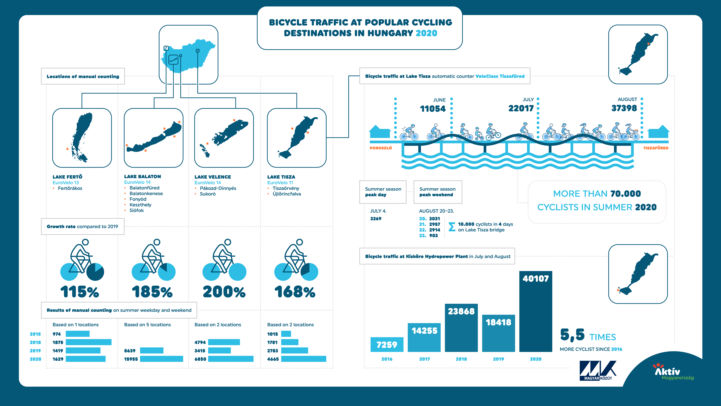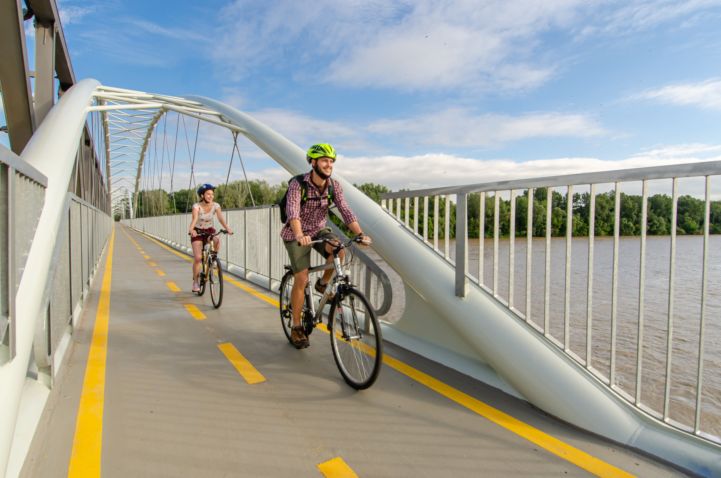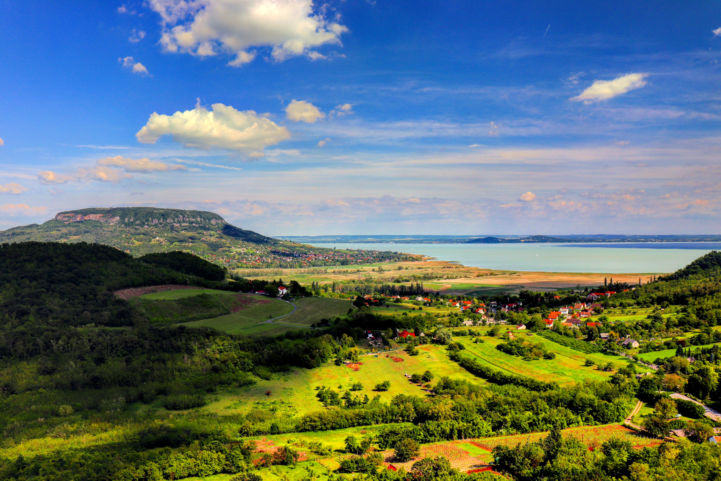Cycle tourism was this summer’s winner in Hungary
Magyar Közút counted cycle tourists with the help of manual and automatic counts. The counts were also carried out around the large Hungarian lakes, Lake Neusiedl on EuroVelo 13 - Iron Curtain Trail, Lake Tisza on EuroVelo 11 - East Europe Route, Lake Velence and Lake Balaton on EuroVelo 14 - Waters of Central Europe. This counting campaign during three months in the summer season has been repeated for several years already, so it is possible to compare trends.
The rate of growth compared to last year is staggering. Based on the counts, a doubling of the number of cyclists was registered on Lake Tisza, Lake Velence and Lake Balaton. The highest increase was registered at Lake Velence, where the number of cycling tourists has doubled this year, probably due to the possibility of a round trip that is easy for families with small children. The result of the Lake Balaton count shows an 85 percent increase.

Lake Tisza is the new cycling paradise
Where does this soaring growth come from? There is certainly a link to recently finished cycling network developments and infrastructure improvements. With the completion of the missing part of the Lake Tisza circle, the number of cycling tourists there doubled in one year’s time. More than 70,000 people cycled across the bridges opened to the public in June. In July and August last year, 18,000 cyclists were counted in Kisköre, and this year more than 40,000 during the same period. The missing section between Poroszló and Tiszafüred was completed, so it had an extremely positive effect on cycling around the entire Lake Tisza.

Even in a short timeframe, the increase in the number of cycle tourists can be huge. Since 2016, the number of cyclists around Lake Tisza has increased 5.5 times, thanks to the development of the cycling network and calming measures for car traffic. With the development of bike path sections and bike bridges, the primary goal is to be able to cycle in safe conditions and focus only on the beautiful natural environment instead of road traffic. The completed bike paths exponentially increased the number of people who choose this form of active tourism.

Developing cycle tourism: Always think in networks!
The development of touristic cycle routes in Hungary follows a network logic. This means that the goal is to create interconnected local and regional networks that are easy to navigate for cycle tourists and which, with the development of the right services, will attract even more of them, both domestic or from abroad. The most important developments follow this logic. For example, this is how Eurovelo 14 – Waters of Central Europe was designated this year to run from Szentgotthárd and along Lake Balaton to Lake Velence. The completion of the section of Eurovelo 6 – Atlantic – Black Sea between Szentendre and Budapest, the start of constructing the missing EuroVelo 6 section between Dunakeszi Budapest on the other side of the Danube and the construction of the section from Budapest to Balaton to connect EuroVelo 14 to the Hungarian capital are other noteworthy developments further strengthening the national cycle network as well as the EuroVelo network. The completion of the missing links between the routes can increase the tourist attraction of a region by leaps and bounds, as we can see in the case of Lake Tisza.
Targeted active tourism communication
This year, the Centre For Development of Active and Ecotourism (AÖFK) launched a regional active tourism campaign for the first time, one of the most important elements of which was the presentation of the cycling developments on Lake Tisza. To raise the profile of the area, the AÖFK supported videos, social media campaigns, advertisements and a number of media appearances. The increase in the number of cyclists has confirmed the assumption that there is a great demand for cycling developments and their promotion. The season of active tourism did not end with the summer, so AÖFK will continue to present the sights of the region and the hitherto lesser-known destinations and hiking trails during the autumn.
Find here the source report by AÖFK.
Author: Holger Haubold